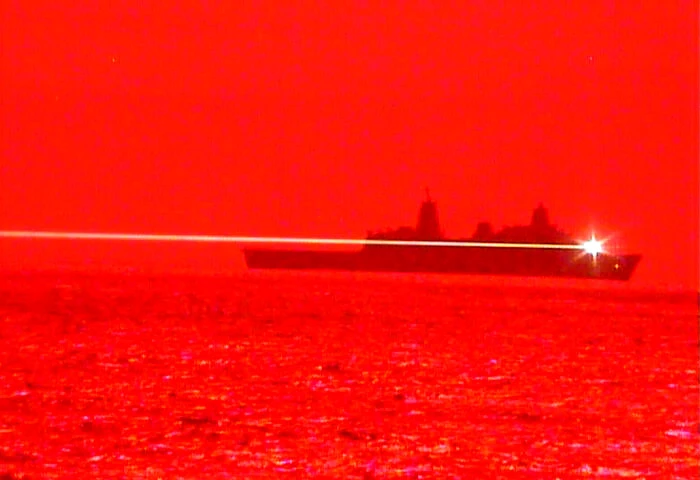The US Navy has successfully carried out a demonstration of a high-energy laser weapon installed in a warship. On May 16, 2020, the amphibious transport dock ship USS Portland (LPD 27) locked onto and disabled an unmanned aerial vehicle (UAV) with its Solid-State Laser - Technology Maturation (SSL-TM) Laser Weapon System Demonstrator (LWSD) MK 2 MOD 0.
With their ability to engage targets at the speed of light and shoot them down at a cost of a dollar a shot, lasers and other directed-energy weapons (DEWs) have become a high priority for the world's major military powers.
The LWSD used in the recent test at an undisclosed location was developed by the US Office of Naval Research using a solid-state laser developed by Northrop Grumman. It's one of several DEWs being produced for the US Armed Forces and builds on the successful sea tests of an earlier laser aboard USS Ponce in 2014.
According to the Navy, the purpose of such lasers isn't necessarily to destroy the target, but to damage, degrade, neutralize, or defeat its capabilities as well.
"By conducting advanced at sea tests against UAVs and small craft, we will gain valuable information on the capabilities of the Solid State Laser Weapons System Demonstrator against potential threats,” says Captain Karrey Sanders, commanding officer of USS Portland. "The Solid State Laser Weapons System Demonstrator is a unique capability the Portland gets to test and operate for the Navy while paving the way for future weapons systems. With this new advanced capability, we are redefining war at sea for the Navy."
The videos below show the test.
Source: US Navy





